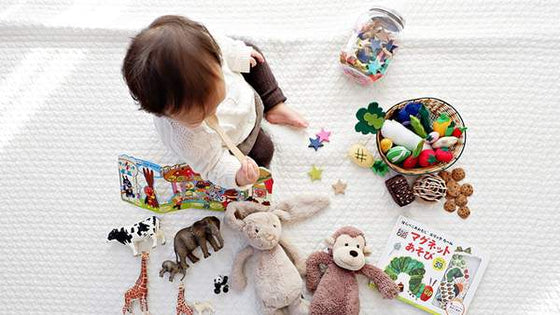
5 Super Easy Tips to Instantly Reduce Your Kitchen's Eco-Footprint

They say you are what you eat, but what about where you eat? Between grocery shopping, meal prep, and midnight trips to the snack drawer, the average kitchen sees a lot of foot traffic. And at Puracy, we're deadicated to leaving a positive mark on the world around us—so we do our best to convert such a high-volume nook into a low-impact powerhouse.
Luckily, you don't have to invest in a full-blown renovation to make your kitchen greener. These simple swaps require minimal effort—and will even save you money in the long run. Here's how to make any kitchen more eco-friendly:
1. Nix the paper towels
It's estimated that if every household across America reduced their use by just one roll of paper towels per year, it would save 544,000 trees and significantly reduce some of the toxic chemicals that the manufacturing process releases into our waterways.
Plus, even the most absorbent varieties of paper towels are, essentially, single-use – meaning they quickly accumulate in landfills. If you're able to, reserve your paper towel stash for tackling particularly unhygienic emergencies, or odd jobs (like preventing refrigerated greens from wilting). Use a reusable rag, towel, or microfiber cloth for other kitchen areas.
When paired with even the gentlest of multi-surface cleaners, microfiber cloths effectively tackle everything from fingerprints on the fridge to a post-food-prep kitchen counter. To doubly reduce your eco-footprint, we recommend opting for a higher quality cloth, since this will help prevent its microfibers from seeping into aquatic environments. Higher quality material will wear down slowly (some last up to 500 washes), so it won't need to be tossed into landfills as quickly.
Microfiber cloths should be washed after every use. Run them with a natural laundry detergent (sans fabric softener) on high. If possible, avoid washing microfiber cloths with cottons, and never run them in the dryer on high.
2. Reevaluate your dish soap
Conventional dish soaps are often loaded with synthetic foam boosters like SLS (sodium lauryl sulfate), Ethanolamine, and Triclosan. These (and other) toxins could pose threats to both the environment and the hands that wash the dishes.
Case in point: Triclosan, a known carcinogenic, is widely used as a harsh pesticide in commercial, institutional, and industrial settings. It's also prevalent in a number of dish soaps, despite a study that claims exposure to it might weaken the heart. It's no wonder Triclosan has made our list of toxins to avoid in your home.
At Puracy, we know that what goes into our sinks goes back out into the water—so we've made it a point to formulate our skin-safe, natural dish soap to be entirely biodegradable. We also aim to reduce waste; our hyper-concentrated formula requires only a teaspoon to do an entire sink full of dishes and rinses off quickly.
3. Load up the dishwasher
If you have a relatively new dishwasher, using it could save more water and energy than hand washing would. In 2013, the Department of Energy set limits on how much H2O dishwashers can use per cycle—5 gallons of water for full-size, and 3.5 gallons for compact. And that may just be less than what the average person uses to hand wash a comparable amount of dishes in the sink.
You already know to make the most of your dishwasher by filling it entirely before running. You can go the extra mile by using eco-friendly detergent packs. For our third-generation detergent, we teamed up with a chemist who has more than 20 years in dishwasher detergent formulation experience. We're proud to say the end result is an effective detergent formulated with 99.95% natural ingredients.
4. Rethink your food habits
As a society, we waste an incredible amount of food. Across America, a whopping 150,000 tons of uneaten food are thrown away per day, according to some estimates. That's about one third of total groceries purchased.
All that waste takes a toll: many foodstuffs aren't able to properly decompose in landfills, and as a result they release methane, a potent greenhouse gas. It also means more pesticides are put into the soil by the agricultural industry than are actually necessary.
To reduce your food waste, consider buying pantry staples from the bulk section—you can control how many beans, nuts, and other snacks you get each time (and if you use your own cloth bags, you'll reduce your plastic consumption while you're at it). Loose vegetables, such as the kind sold at farmers markets, are also great for the same reason.
Another great way to reduce food waste is to make leftovers a priority. Label them, and if necessary, freeze them to avoid spoilage (you can freeze almost anything, including cheese).
Toss any wilting veggies into a soup or an inventive recipe, rather than chucking them into the trash. Also, make sure you're storing your produce properly—proper storage will drastically prolong the shelf life of fruits and veggies.
You'll end up saving money, too—less food wasted equals less money spent.
5. Set up a freezer or kitchen sink compost bin
The road to reducing your food waste is a long one, and you're bound to lose a few carrots along the way. So why not set up a compost bin for any spoiled veggies that flew under your radar? You can also throw in any naturally decomposable bits, like eggshells, coffee grinds, and produce peels.
If you live in an urban area, check for designated city facilities, farms, or farmers markets that accept food scraps to convert into compost. Or use that compost for your own backyard garden.
—
Sustainability is important to us here at Puracy—which is why all of our products, including our kitchen line, are non-toxic, vegan, and 100% biodegradable. And these simple little ways to reduce your kitchen's eco-footprint can make a big difference to our planet in the long run.






